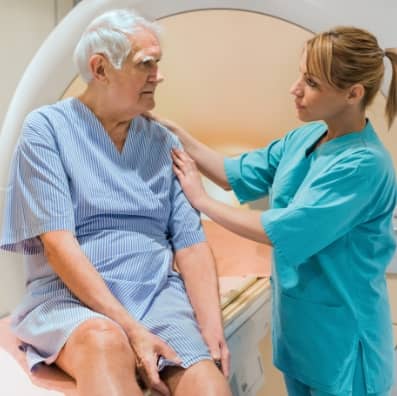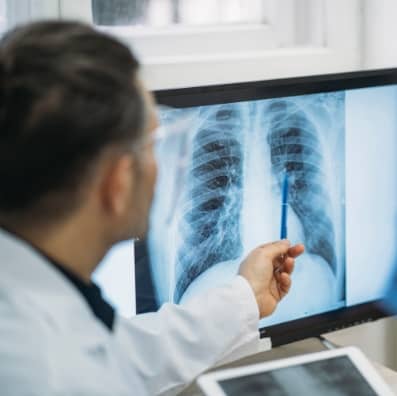Early detection when treatments are most effective is key to improving patient outcomes. Learn how ClearRead CT helps radiologists find more nodules that may be early-stage lung cancer.
Lung cancer diagnoses effects over 2 million people each year. Early detection is key to improving treatment pathways and patient outcomes. Get up to speed on lung cancer data, detection methods and building a community program at your healthcare organization.10
Learn how screening helped Dr. Youssef save a life.

Lung cancer detected in the early stages is 10x more curable than late stage lung cancer. Unfortunately, almost half of lung cancer is detected in the later stages. During CT studies ordered for other reasons, incidental nodules can provide a valuable early detection tool. Use these valuable resources to learn more about the many benefits of lung cancer screening.
Early detection when treatments are most effective is key to improving patient outcomes. Learn how ClearRead CT helps radiologists find more nodules that may be early-stage lung cancer.
From lung cancer incidence and risk factors to treatments and five-year survival rates, the American Lung Association is a helpful resource for those looking for lung cancer statistics and information.
A chest CT is difficult to interpret. ClearRead CT suppresses vessels and machine noise and detects nodules to help radiologists see areas of concern that might have otherwise been missed.
The most important validation that we receive is from the real world success stories of our medical partners. These individual case studies represent a small sample of the positive feedback that drives our success.
Mesothelioma is a type of cancer that effects nearly 3,000 people annually and is often caused by exposure to asbestos. Read about the causes, symptoms, detection, prognosis and treatment options.
The Fleischner Society is a medical organization specializing in thoracic radiology and conditions of the chest. They are an influential organization that helps to shape medical imaging standards and thought leadership.
Dr. Joe and Leveling Health create meaningful and impactful communications between healthcare providers and patients to inspire confident dialogue and empower strong community outreach programs.

Lung cancer screening guidelines have changed over the last 10 years. In May 2021, the United States Preventive Services Task Force (USPSTF) published new guidelines based on clinical findings that demonstrated the clear value of screening in saving lives. Annual screening is recommended for people aged 50-80 with a 20 pack-year smoking habit who have quit within the last 15 years.
In November 2021, the Centers for Medicare and Medicaid Services recommended an increase in reimbursement for low-dose CT exams specifically for lung cancer screening. This 37% increase is driven by reclassification of CPT code 71271 into APC 5522.
Learn the basics of lung cancer screening protocols, guidelines and reimbursement.
Get the latest lung cancer screening information from the USPSTF.
Track lung cancer screening programs data.
Learn the ins and outs of lung cancer screening reimbursement.